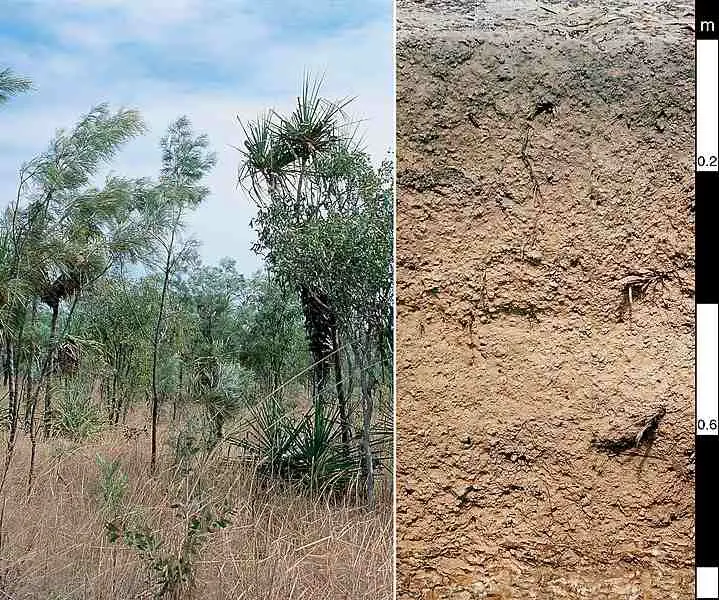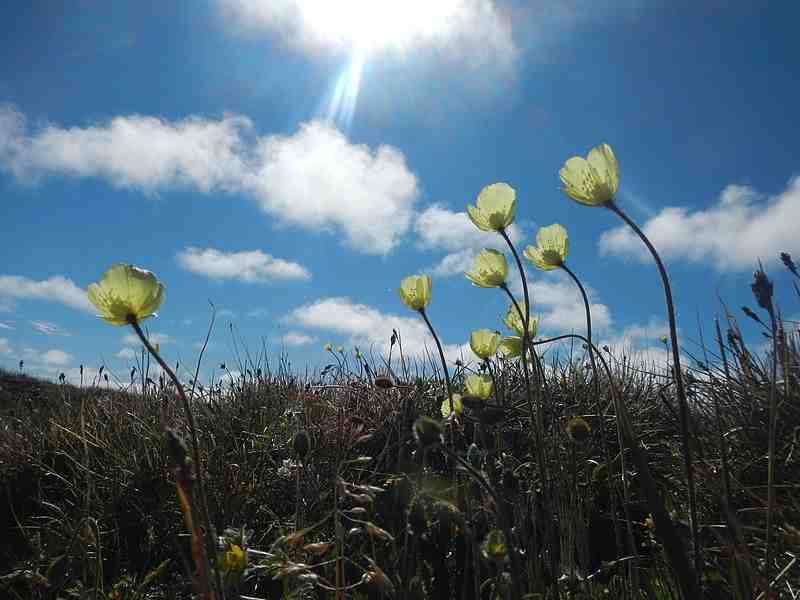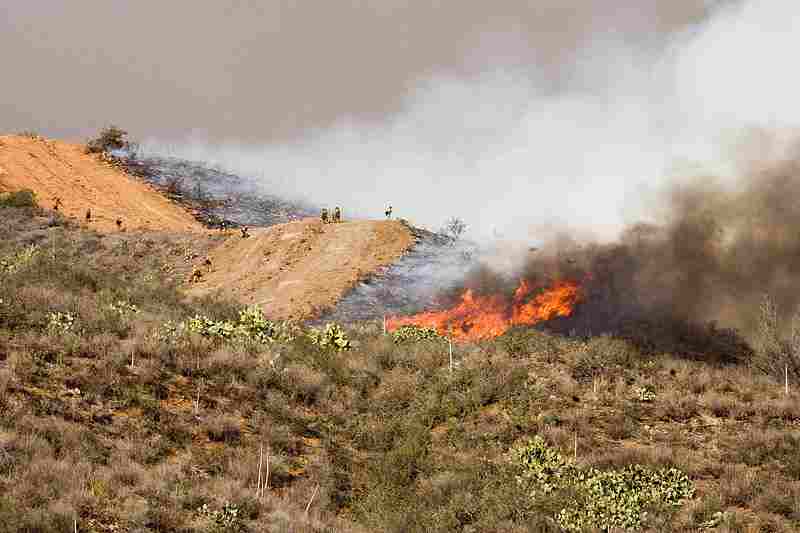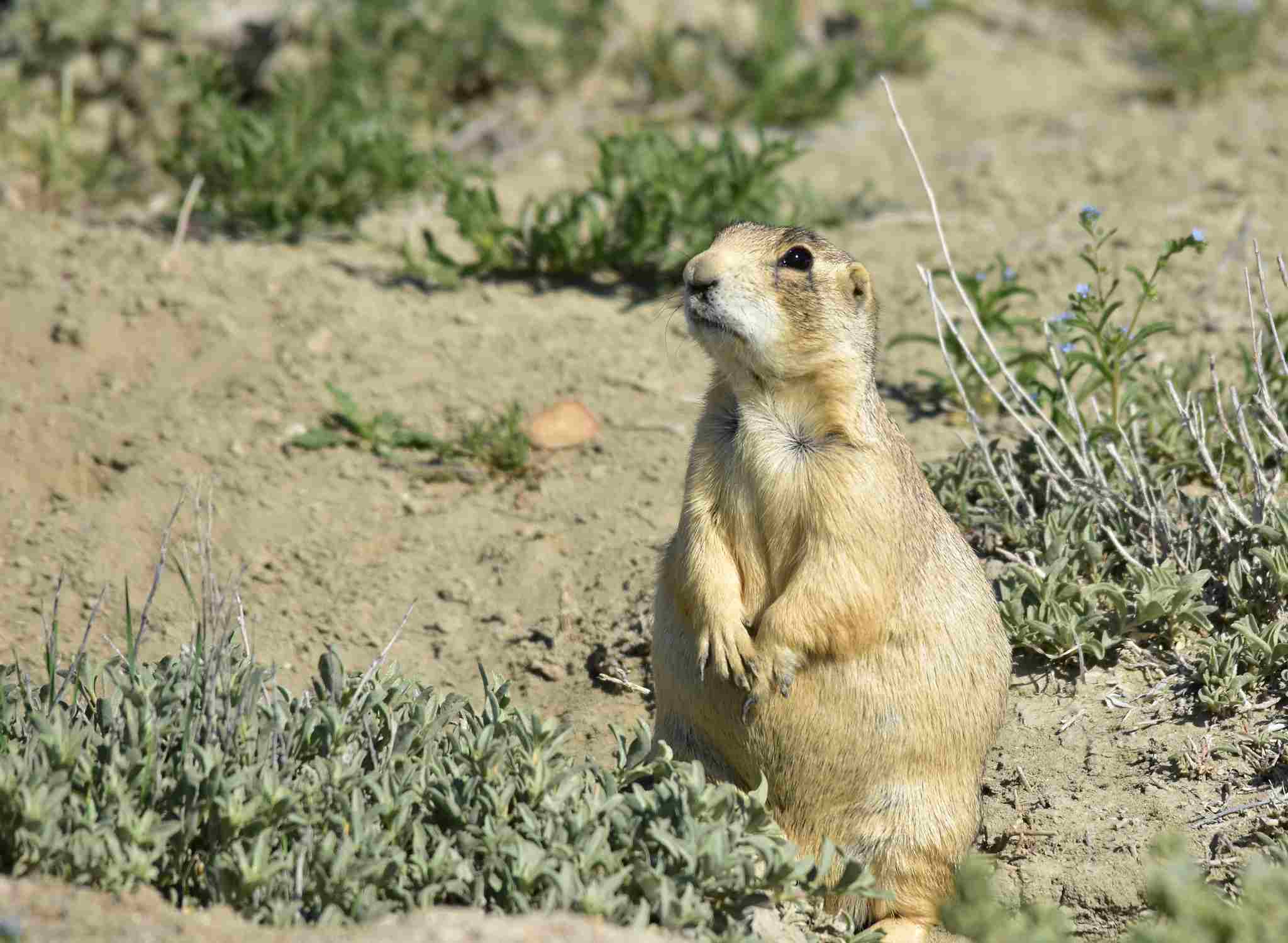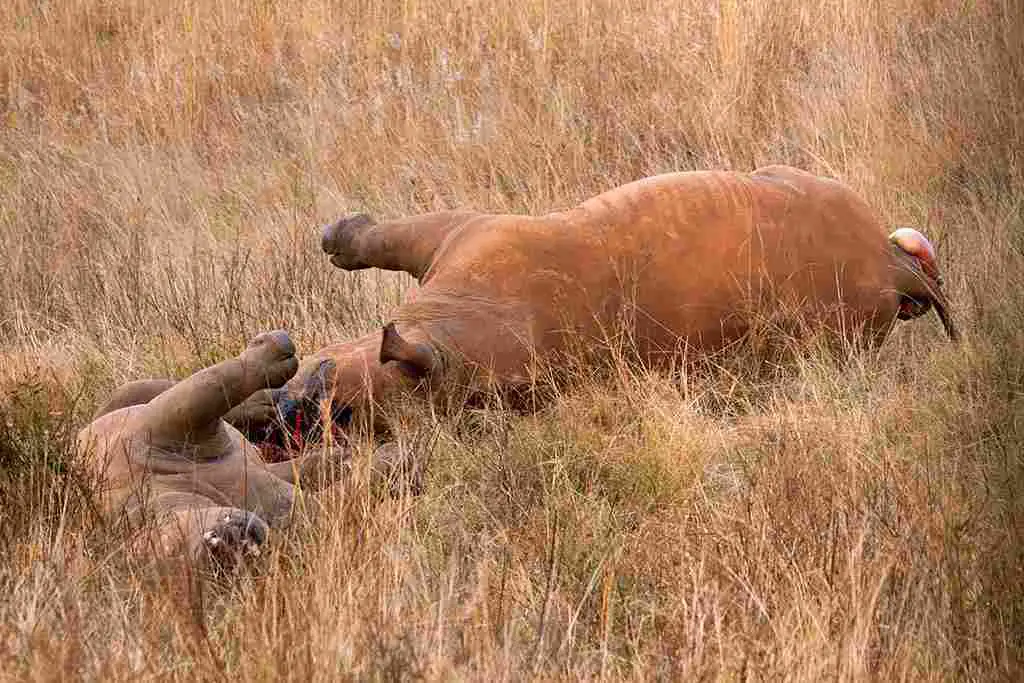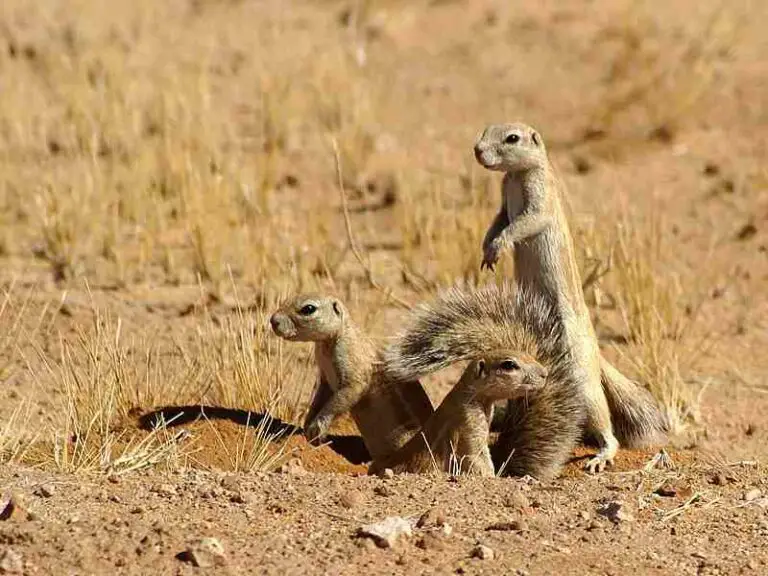5 Characteristics of Savanna Ecosystem Discussed
Characteristics of savanna ecosystem are; dominance of grassy vegetation, climatic seasonality, wildfire susceptibility, highly-adaptive organic populations, and porous, low-fertility soil.
This article discusses the characteristics of savanna ecosystem, as follows;
1). Dominance of Grassy Vegetation (as one of the Characteristics of Savanna Ecosystem)
Perhaps the most typical characteristic of the savanna is the dominance of grasses among plants in this biome.
Generally, plants in the savanna include; forbs, shrubs, grasses and trees. Among these, grasses produce the most biomass, and occupy the largest total area of land.
Grasses are crucial in their ecological role in the savanna, and contribute to energy transfer as photosynthetic producers in savanna food chains.
They are well-adapted to the climatic conditions of the savanna, and can regenerate rapidly after hazardous events like severe-drought and wildfire outbreaks.
Examples of grasses in the savanna are; tussock grass (Hyparrhenia spp.), red grass (Themeda triandra), guinea grass (Panicum maximum), and buffel grass (Cenchrus ciliaris).
*Tussock Grass
Tussock grass is well represented in savanna locations within Australia and Africa.
It is resilient, growing densely and reaches notable vertical heights compared to other types of grass. Species of tussock grass occurring in the savanna include; Hyparrhenia diplandra, and Hyparrhenia hirta [2].

*Red Grass
Another common and prominent example of a grass plant growing in the savanna is red grass.
It derives its name from producing reddish inflorescence, and may grow densely like typical tussock grasses.
*Guinea Grass
Guinea grass is a savanna plant that is indigenous to Africa, but has been introduced into grasslands in most tropical regions of the world. It produces broad leaves and can grow densely, often being used as livestock forage.
*Buffel Grass
Like guinea grass, buffel grass is an African native, which has been introduced into other parts of the world. It is also good as forage for grazers, is highly-tolerant of drought.
While being the most dominant plants, grassed in the savanna are supported in their ecological role as producers, by trees, forbs and shrubs, alongside other autotrophic organisms present.
2). Climatic Seasonality
Another distinctive characteristic of the savanna biome is climatic seasonality, or the occurrence of distinguishable annual seasons.
Seasons in the savanna are; wet and dry, which alternate with each other yearly, and are influential toward the survival and adaptations of savanna animals and plants.
*Wet Season in the Savanna
During the wet (or rainy) season, precipitation levels are relatively-high in the savanna.
This season is driven by a combination of climatic elements including solar radiation and wind; coinciding with the migration of the Intertropical Convergence Zone (ITCZ) toward the savanna [5].
Intertropical Convergence Zone (ITCZ) is a region of low atmospheric pressure, characterized by the convergence of southern and northern-hemispherical winds to induce condensation and rainfall.
Because of higher amounts of rainfall, the savanna becomes green with healthy plant-growth and more-abundant with animals that benefit from the increase in resources.
Animal breeding, immigration, plant pollination, fruit production, flowing, and germination; all occur at their highest rates in the wet season.
*Dry Season in the Savanna
On the other hand, rainfall is generally low in the savanna during dry season.
This is usually accompanied by lower humidity levels and higher relative temperatures.
Conditions in the savanna during the dry season bear resemblance to the conditions preceding desertification, and usually feature extensive drought periods.
As a result of less rainfall and low humidity, vegetation dries up in most parts of the savanna during dry season, and aquatic micro-habitats like wetlands, lakes and ponds shrink in their area of coverage.

Many savanna trees shed their leaves in the dry season in order to achieve conservation of water and energy.
*Impact(s) of Climatic Seasonality on Savanna Animals
Herbivores in the savanna may face challenges of food-resource depletion during the dry season, as plant growth-rates reduce.
Many of these herbivores migrate toward more-humid zones; an adaptive migratory behavior that has evolved mostly in response to the climate.
Others may remain in the savanna; clustering in areas with the most vegetation and humidity. An example of this is the gathering of elephants around waterholes in the dry season [4].
This is usually an advantage for carnivorous predators like the felines, which gain more exposure to the herbivores as they cluster in vegetated zones during the dry season.
All animals that thrive in the savanna are adapted to the climatic seasonal changes, which have led them to tolerate drought, device alternative feeding strategies (like clustering, migration, prey-stalking, and keen sensitivity).
Lastly, the changing seasons impact savanna animal lifecycles, and determine the rate and trend of reproduction and biological development in these organisms.
3). Wildfire Susceptibility (as one of the Characteristics of Savanna Ecosystem)
Susceptibility to wildfire is a typical characteristic of the savanna ecosystem, and is driven by various factors including climatic and vegetative.
Most savanna landscapes are prone to the outbreak of wildfires, and such hazards have a role to play in the adaptation and dynamics of native animals and plants.
Factors that make savannas susceptible to wildfire include;
1. Occasional drought
2. Grassy vegetation (which dries up easily)
3. Exposure of the landscape to lightening strikes
4. Human activities like camping, hunting, and agriculture
Shrubs, trees and grasses in the savanna can act as natural biofuel to sustain fire from accidental ignition (as from lightening) or uncontrolled burning by humans.
The occasional dryness of savanna regions only makes these plants more efficient as fuel, and accounts for the higher rate of wildfire events in dry season [1].
Wildfires have some positive effects on the savanna biome. These include removal of old vegetation, stimulation of new growth, and facilitation of nutrient cycling.
Ash left after wildfire events may serve as an additive for soil conservation, by converting plants into absorbable nutrients on the soil surface.
Many plants in the savanna owe their ecologic resilience partly to wildfire events, which have caused them to regenerate rapidly, and develop tough tissues and deep, large roots.
Negative effects of wildfires on the savanna are;
1. Displacement of wildlife
2. Loss of habitats
3. Regional air pollution (by carbon black and other combustion byproducts)
4). Highly-Adaptive Organic Populations
The savanna biome plays host to a diverse group of organisms that have evolved and become highly-adapted to the distinctive, challenging conditions of the terrain.
Adaptations of these organisms for their environment include physiological features and behaviors for coping with drought, occasional food shortages, high temperatures, and the threat of predation.
Plants in the savanna often posses deep roots to access water at depth during the dry season. Many savanna plants also have water-storage capabilities, due to the possession of succulent leaves and stems [6].
As earlier stated, savanna plants may also have wildfire-resistant adaptations.
These include thick outer layers (like bark) to protect internal tissues from being destroyed by heat during wildfire events. Some plants have thick-coated seeds that regenerate them after a wildfire has occurred.
One of the animals with the best-adapted camouflage in the savanna is the African Leopard (Panthera pardus), whose tawny fur has dark rosette-markings that enable them blend effectively into the brown grassy landscape. This, along with their stealth, are mostly responsible for their thriving as carnivorous hunters in grasslands.
Other animals including herbivores like the wildebeest, are able to withstand periods of limited water availability, more than their relatives in other biomes.

5). Porous, Low-Fertility Soil (as one of the Characteristics of Savanna Ecosystem)
Characteristics of soil in the savanna include, high porosity and low fertility; which are the results of ecologic, geologic and climatic factors.
*Savanna Soil Fertility
Fertility of soil in the savanna is relatively low.
This is caused by leaching in the wet season, that strips the upper soil layers of their nutrients.
Essential nutrients lost to heavy rainfalls and intensive leaching in the savanna include; potassium, phosphorus and nitrogen [3].
Nutrient deficiency accounts significantly for the inability of savanna regions to support numerous, large trees, along with other factors like the climate.
*Savanna Soil Porosity
Savanna soil is usually porous and loose in its structure or lithic fabric.
As a result, the soil is well-drained, with rainwater percolating easily through the upper layers.
This attribute contributes to the severity of leaching and the infertility of the soil, but is also prevents waterlogging, and facilitates the productivity of soil organisms in a well-aerated environment.
Leaching leaves savanna soil with a sand texture, and high relative concentrations of aluminum and iron oxides, which makes the soil 'lateritic'; with a light brown to reddish color.

Conclusion
Characteristics of savanna ecosystem are;
1. Dominance of Grassy Vegetation
2. Climatic Seasonality
3. Wildfire Susceptibility
4. Highly-Adaptive Organic Populations
5. Porous, Low-Fertility Soil
References
1). Cahoon, D. R.; Stocks, B. J.; Levine, J. S.; Cofer; Wesley, R.; O'Neill, K. P. (1992). "Seasonal Distribution of African Savanna Fires." Nature 359(6398). Available at: https://doi.org/10.1038/359812a0. (Accessed 12 June 2023).
2). Haddad, C. R.; Foord, S.; Whitehead, L. (2021). "Tussock Circumference, Land Use Type and Drought Variably Influence Spider Assemblages Associated with Hyparrhenia hirta Grass Tussocks." African Entomology 29(1). Available at: https://doi.org/10.4001/003.029.0150. (Accessed 11 June 2023).
3). Mukwashi; K.; Gandiwa, E.; Kativu, S. (2012). "Impact of African elephants on Baikiaea plurijuga woodland around natural and artificial watering points in northern Hwange National Park, Zimbabwe." Available at: https://doi.org/10.6088/ijes.002020300022. (Accessed 12 June 2023).
4). Mustapha, A.; Abdu, N. (2022). "FERTILITY STATUS OF SOME SELECTED SOILS IN THE SAVANNAH REGION OF NORTHERN NIGERIA." Available at: https://www.researchgate.net/publication/366548284_FERTILITY_STATUS_OF_SOME_SELECTED_SOILS_IN_THE_SAVANNAH_REGION_OF_NORTHERN_NIGERIA. (Accessed 12 June 2023).
5). Rian, S.; Xue, Y.; MacDonald, G. M.; Touré, M.; Yu, Y.; De Sales, F.; Levine, P. A.; Doumbia, S.; Taylor, C. E. (2009). "Analysis of Climate and Vegetation Characteristics along the Savanna-Desert Ecotone in Mali Using MODIS Data." GIScience & Remote Sensing 46(4):424-450. Available at: https://doi.org/10.2747/1548-1603.46.4.424. (Accessed 11 June 2023).
6). Scholz, F. G.; Bucci, S. J.; Goldstein, G.; Meinzer, F. C.; Franco, A. C.; Miralles-Wilhelm, F. (2007). "Biophysical properties and functional significance of stem water storage tissues in Neotropical savanna trees". Plant Cell Environ. 2007 Feb;30(2):236-48. Available at: https://doi.org/10.1111/j.1365-3040.2006.01623.x. (Accessed 12 June 2023).
